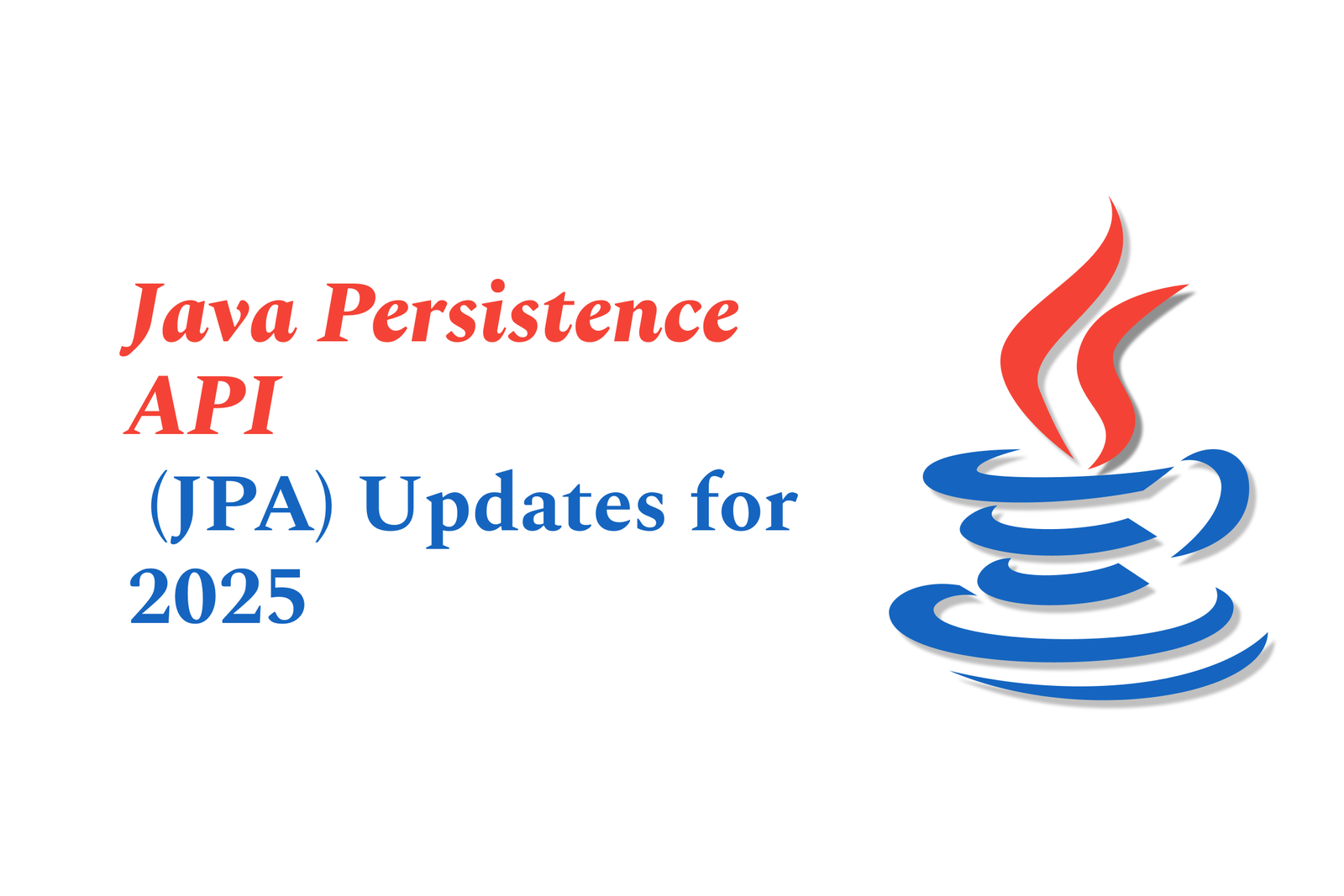Java Persistence API (JPA) updates for 2025
In 2025, Java Persistence API (JPA) advances with enhanced Jakarta Persistence 3.x support, improved query validation, better integration with Java 17+, and vendor extensions like `@ReturnUpdate`. These updates streamline ORM, boost performance, and simplify database interactions for modern Java apps.
Java Persistence API (JPA) Updates for 2025
1 ) Overview of JPA and Its Role in ORM
The Java Persistence API (JPA) continues to serve as a crucial specification for object relational mapping (ORM), enabling developers to map Java objects to database tables seamlessly. JPA implementations like Hibernate, EclipseLink, and Apache OpenJPA remain the foundation for database operations in both Java EE and Java SE applications. The focus in 2025 is on leveraging annotations and metadata for mapping, supporting both static and dynamic queries with a SQL like language.
2 ) Enhancements in JPA Implementations
Hibernate ORM: The 2025 stable release embraces Jakarta Persistence 3.2 and Java 17 compatibility, improving support for QuerySpecification and updated mapping schemas. New features include resource scanning enhancements and advanced locking.
Spring Data JPA: Provides sophisticated repository support with reduced boilerplate code and integration with custom queries, Querydsl, auditing, and modern annotation based configuration. Support policies and migration paths have been refined for easier upgrades.
EclipseLink: The reference implementation continues to extend JPA with features such as the `@ReturnUpdate` annotation, which supports returning database generated values back to entities during update operations, improving interaction with databases like Oracle and stored procedures.
3 ) Key Features and Functionalities
Entity and Field Mapping: Entities require primary keys and support auto generated IDs. Developers can customize table and column mappings via annotations such as `@Table` and `@Column`. The persistence mechanism strictly uses either fields or corresponding getters/setters uniformly.
Relationship Mapping: JPA supports complex relationships including one to one, one to many, and many to many, facilitating comprehensive data model representation.
Query Validation and Execution: Queries annotated with `@Query` are validated at bootstrap time. Support for Querydsl predicates allows type safe JPA queries, enhancing developer productivity.
Auditing and Pagination: Transparent auditing of domain classes and built in pagination support help manage data consistency and scalability.
Configuration: Both modern annotation driven and legacy XML configurations are supported, adapting to diverse project needs.
4 ) Advancements in Standard and Vendor Extensions
The standardization under Jakarta Persistence 3.x marks continued evolution for better modularity and compatibility with current Java versions.
Vendor specific extensions, particularly from EclipseLink and Hibernate, introduce annotations and XML elements to manage database interaction nuances like returning values after inserts or updates (`@ReturnInsert`, `@ReturnUpdate`), supporting triggers and database defaults more effectively.
5 ) Support, Migration, and Community Resources
Comprehensive support policies and upgrade guides are regularly updated, particularly for Spring Data JPA and Hibernate, to assist developers in migrating existing applications to newer JPA versions smoothly.
Community resources, tutorials, and official documentation remain robust, promoting best practices and easing adoption of new features.
Certification and training programs (e.g., VMware Tanzu Spring offerings) are emphasized to equip developers with the latest knowledge in JPA usage.
In summary, the Java Persistence API continues to evolve in 2025 with a focus on embracing newer Java language features, Jakarta EE transitions, and enhanced tooling and vendor extensions. These updates streamline database interactions, reduce boilerplate code, and offer greater flexibility, ensuring JPA’s significance in modern Java development remains strong.
https://justacademy.in/news-detail/react-native?s-multi-language-support-expands
https://justacademy.in/news-detail/how-flutter-is-dominating-cross-platform-app-development
https://justacademy.in/news-detail/react-native?s-new-animation-framework:-smooth-as-butter
https://justacademy.in/news-detail/android-security-best-practices-updates
https://justacademy.in/news-detail/flutter-game-development-is-gaining-momentum
Related Posts
In 2025, top Angular libraries offer modern, feature-rich components and tools for building dynamic web apps. From powerful data grids to low-code platforms like UI Bakery, these libraries enhance development speed, UI design, and scalability, making them essential for Angular developers.
Migrating from AngularJS to Angular 17 involves gradually upgrading your app by running both frameworks together using tools like ngUpgrade, rewriting components in TypeScript, and adopting Angular’s modern architecture to enhance performance, maintainability, and long-term support.
Angular state management tools help organize and handle app data efficiently, improving scalability and maintainability. Popular options include NgRx for robust, RxJS-based patterns, and newer Signal Store solutions that offer simpler, reactive approaches integrated tightly with Angular’s latest features.
RxJS in Angular empowers developers to manage asynchronous data streams with powerful operators like `forkJoin`, `combineLatest`, and `zip`. Mastering these key operators in 2025 is essential for building efficient, reactive applications that handle complex event sequences seamlessly.
Angular performance optimization in 2025 focuses on improving app speed and responsiveness by using techniques like OnPush change detection, lazy loading, efficient data caching, and AOT compilation. These practices reduce load times, enhance user experience, and ensure scalable, fast Angular applications.
In 2025, Angular remains preferred for large-scale, enterprise apps with its robust, all-in-one framework, while Vue attracts developers seeking simplicity and fast development for smaller projects. Both frameworks excel, with choice driven by project needs and team expertise.
Angular Signals are a new reactive primitive in Angular 16 that enable fine-grained, efficient change detection by automatically tracking dependencies and updating only affected parts of the UI. They simplify state management and boost app performance, revolutionizing Angular's reactivity model.
Angular interview questions to prepare in 2025 focus on core concepts like components, directives, data binding, routing, and dependency injection, along with TypeScript mastery and latest Angular features to ensure strong practical knowledge for building scalable, efficient web applications.
AngularJS reached its official end of support in January 2022, meaning no further updates or security patches. To ensure app security and performance, developers should consider migrating to modern Angular versions or seek third-party long-term support options if immediate migration isn’t possible.
The Angular Roadmap 2025 highlights upcoming features focused on improving developer experience and performance, including zoneless Angular, Signals integration, enhanced Forms, async data handling, improved HMR, and expanded Angular Material/CDK enhancements, driving modern, efficient web app development.










